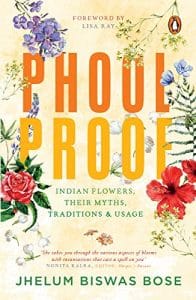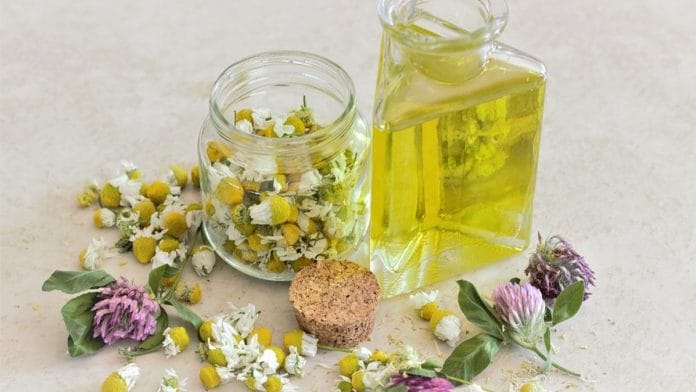Rene Gattefosse, a French chemist, who accidentally burnt his hand, while working in the laboratory, is said to be the pioneer of modern aromatherapy. When he scalded his hand, he plunged it into a jar containing lavender oil. This not only healed his wounds but spurred him on to experiment more with essential oils and their therapeutic values. In 1928 he coined the word ‘aromatherapie’ and this marked the arrival of what we know today as aromatherapy. This is what I call turning poison into medicine, where an accident led to the discovery of the finest healing anointment. Dr Jean Valet took this therapy ahead and used it for healing burns and wounds of soldiers injured during the First World War. He also successfully treated psychological ailments with essential oils, thereby establishing aroma oils’ power of healing physically, physiologically and psychologically. However, the person credited to have pioneered the use of essential oils in beauty therapy was an Austrian-born biochemist Madam Marguerite Maury. While she was working with a surgeon in Alsace, she read a book called Les Grandes Possibilités par les Matières Odoriferantes
(The Great Possibilities of Aromatic Substances) by Dr Chabenes, written in 1838. Incidentally, he was also the teacher of Gattefosse. The book became Maury’s guide and set her on her journey with aromatherapy. In 1961 she wrote a book Le Capital Jeunesse; however, the book did not receive the attention it deserved. In 1964 it was released in Britain under the title The Secret of Life and Youth and it remains a sort of bible for contemporary aromatherapy.
Through her years of research and practical application, Maury developed a unique form of massage using blends of essential oils. Her entire work—choice and use of essential oils and massage—was based solely on the principles that we can remain youthful in our attitude, energies and beliefs if we keep our systems clear and functioning effectively. This, she believed, could be achieved by practising aromatherapy. Maury lectured and gave seminars on the subject throughout Europe and opened aromatherapy clinics in Paris, Switzerland and England.
She possessed some of the eccentricities of a genius, but she was also a generous and loveable woman, and a magnetic and charismatic person. She was a whirlwind of energy and enthusiasm, working ceaselessly till the day she breathed her last. Her last manuscript, found at her bedside, began with the words, ‘The aromatherapy involved in cosmetology can lead to the most extraordinary of results.’
Also read: How nanotechnology can be used to intensify our sense of smell
LEGEND OF THE ROSE
Once, for a dinner I hosted in my home, I created a small bed of gulab petals at the centre of the table and placed a few candles on it. As the evening grew, the aroma of the gulab opened up and hung around the rooms like a fragrant, invisible cloud.
My favourite way of using gulab as a fragrance is by using it as a mouth freshener. In a petal I place an elaichi and a laung (interestingly, this spice is a flower) along with a few grains of saunf. This combination creates an explosion of flavours and fragrances in the mouth.
Here, I must say my love for the gulab is inspired by the Mughal queen Mehrunisa (known popularly as Nur Jahan).
As the story goes, Mehrunisa’s fiery temper was as legendry as her passionate love for Jehangir. Once the royal couple had a public altercation, where Mehrunisa flew into a rage and slapped the emperor. This, everyone thought, was the end of Mehrunisa. However, soon Jehangir announced a ceremony for which the pathway of the palace garden was strewn with rose petals. At a particular time when the sunrays fell on the petals and they let out the robust smell, Mehrunisa walked from one end of the pathway, Jehangir from the other end, and they met midway, in that haze of red and intoxicating fragrance. I read about this for the first time in the historical novel A Feast of Roses by Indu Sunderesan, which is based on the life and love of Jehangir and Mehrunisa. There are several versions and interpretations of this story I have come across in this book.
Incidentally, stories and tales also indicate that the rose essential oil was accidentally discovered in India by Mehrunisa. According to the records of Italian traveller Niccolao Manucci, who lived in the Mughal palace during Jehangir’s reign, the rose essential oil was discovered by Mehrunisa. The empress discovered it while bathing in the Shahi Hamam (royal baths), when she noticed an oily film in the water with rose petals left overnight.
Also read: Turmeric tales: How good old haldi is polarising India & the West but starting a dialogue
However, according to Jehangir himself, in his autobiographical work, Tuzuki Jehangiri (Memories of Jehangir), once Asmat Begam (Mehrunisa’s mother, who was known for her skill of making fragrant water) was making rose water when she noticed a thick mass on the surface of pots where hot rose water had been poured from jugs. She collected this ‘oily’ layer and realized that it was so fragrant that a single drop of it rubbed on to the palm filled the air with an enchanting scent of tonnes of red roses blooming simultaneously. Jehangir was so charmed by this delightful fragrance that he presented Asmat with a pearl necklace. It is believed that Emperor Akbar’s wife Salima Begam named this essential oil ‘Jehangiri attar’— ‘Jehangir’s perfume’.
 This book excerpt from Phoolproof: Indian Flowers, Their Myths, Traditions & Usage by Jhelum Biswas Bose has been published with permission from Ebury Press.
This book excerpt from Phoolproof: Indian Flowers, Their Myths, Traditions & Usage by Jhelum Biswas Bose has been published with permission from Ebury Press.






